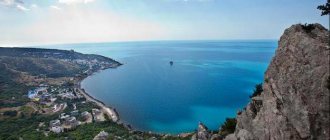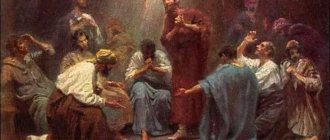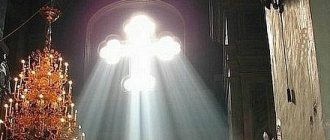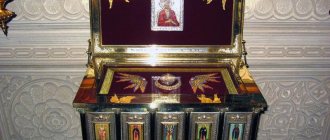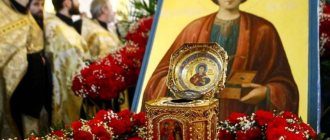Do you want to know what are the largest temples in the world? Although there is some confusion around this term, we understand church as the construct used since its origins for Christian worship, and this will be the definition we will use in this article.
Thus, a church may be, according to this definition, a cathedral, basilica, or other type of building designed for that purpose.
In this category, the largest building is St. Peter's Church in the Vatican, but let's see which temples come next.
Cathedral of St. Sava, Belgrade, Serbia, 8,162 m²
This is the largest Orthodox church in the world and is dedicated to Saint Sava , the founder of this denomination in Serbia. He was the son of Stefan Nemanja, ruler and founder of the medieval Serbian state. The temple was built in the Vrečar district, above the place where the saint's remains would have been cremated in 1595 by the Ottoman Turks.
Construction of the temple began in 1935 and was financed solely by donations. The history of this cathedral dates back to 1905. Wars paralyzed its construction until 1984, which was completely completed in 2003.
Basilica del Pilar, Zaragoza, Spain, 8,318 m²
The construction of the current Basilica of Nuestra Señora del Pilar de Zaragoza has its justification in the increase in the number of Christians in Spain during the seventeenth century.
The previous Gothic-Mudéjar building remained small in the face of the growing number of believers. It was then that the need arose to build a new church of a larger size, more consistent with the Church of the Counter-Reformation.
It was in 1660 that Juan Joseph of Austria, then Viceroy of Aragon, promoted the construction of the basilica. The current exterior of El Pilar is the result of a long design process that began with a design by the architect Felipe Sánchez in 1681 and was subsequently revised by Francisco de Herrera “El Mozo”, artist and architect to Charles II.
The intervention of the Royal Architect Ventura Rodriguez from 1750 was decisive. He updated the interior decoration in accordance with the new classicist trends of the time. He also reconstructed the outer route with domes added to the central one, which was originally thought to be the only one, and towers that would not be completed until the mid-twentieth century.
The basilica preserves and venerates a pillar, a column made of jasper, which, according to legend, was erected by the Virgin Mary herself, who, while still living in Jerusalem, appeared to the Apostle James on January 2, 40. The Basilica of Pilar brings together works of great artistic value from different eras, including frescoes painted by Goya, restored in 2007.
Church of the Holy Trinity, Fatima, Portugal, 8,700 m²
This temple is located in the sanctuary of Nuestra Señora del Rosario in Fatima, 11 kilometers from the city of Ourem and 120 kilometers from Lisbon. It was built in just three years, between 2003 and 2007, and is the most modern on the list. It is an extension of the Shrine of Fatima, which already had the Basilica Nuestra Señora del Rosario , built in the second quarter of the twentieth century.
The new church was consecrated on October 12, 2007, the 90th anniversary of the Marian apparitions of Fatima. In 1917, three children, Lucia de Jesus, Francisco Marto and Jacinta Marto, claimed to have witnessed several apparitions of the Virgin Mary in the area. Therefore, in 1928, construction began on the original Basilica, which will be consecrated on October 7, 1953 and has 15 altars.
It was built in the neo-Baroque style according to the design of the Dutch architect G. Van Krieken and received the name of a minor basilica a year after its opening.
Liverpool Cathedral, UK, 9,687 m²
Liverpool Cathedral is the second largest Anglican church in the world. The temple was built in the last century. Work began in 1904.
Construction began shortly after Liverpool City Council decided in 1901 that the city needed a cathedral of mastodontic proportions. Work was not completed until 1978. It was built by British architect Gilles Gilbert Scott, who was unable to see his project completed as he died 18 years before the last stone was laid. The building was built in the neo-Gothic style.
It is the second longest Cathedral building on the planet (188.7 meters), second only to the Vatican's St. Peter's Building (211.5 meters).
Orthodox Church of Constantinople, or Patriarchate of Constantinople
After Constantine the Great moved the capital of the Roman Empire to the Asia Minor city of Byzantium and named it by his own name - Constantinople (330), the role of the Bishop of Constantinople began to grow rapidly. The Second Ecumenical Council of 381 recognized him as second among Christian bishops after Rome; at the beginning of the 5th century he began to be called the patriarch, and in the 6th century. - Ecumenical Patriarch. Now his full title is Archbishop of Constantinople, New Rome, Ecumenical Patriarch. His residence is in Istanbul.
Many modern Orthodox churches have become local, breaking away from the Patriarchate of Constantinople. In 1994 it included four metropolises in Turkey; dioceses on the island of Crete, a number of islands of the Aegean Sea, Northern Greece, Western Europe, North and South America, Australia, New Zealand; Holy Mount Athos (Aion Oros peninsula in Greece) with its monasteries.
In addition, the Autonomous Finnish Orthodox Church is part of the Patriarchate of Constantinople. It is headed by the Archbishop of Karelian, and all of Orthodox Finland is divided into three dioceses.
Divine services in most dioceses of the Patriarchate of Constantinople are performed according to the Gregorian calendar (according to the “new style”). The monasteries of Athos and some parishes of the Russian Archdiocese of Paris use the Julian calendar (“old style”). However, the services of the Easter cycle - the holiday of Easter (the Resurrection of Christ), the pre-Easter and post-Easter periods - are celebrated by all Orthodox churches on the same days (the exception is the Finnish Church, which celebrates Easter at the same time as Western Christians). In the churches of the Patriarchate of Constantinople, services are conducted in Byzantine Greek, and in emigrant dioceses (Russian, Ukrainian, Carpathian, etc.) - in Church Slavonic and national languages, including the main Western ones. The Finnish Church serves in Finnish and Karelian.
Basilica of Our Lady of Licenska, Poland, 10,090 m²
The Basilica of Our Lady of Liczen is located in the village of Liczen Stary in the Greater Poland Voivodeship. The temple was designed by Polish architect Barbara Bielecka and built in just 10 years, between 1994 and 2004. Its construction was financed by donations from pilgrims.
The church is dedicated to Our Lady. The tower is 141.5 meters high and is the sixth largest in the world. It is also the second place of pilgrimage in the country (second only to Czestochowa, considered the Polish “spiritual capital”).
Alexandrian Orthodox Church, or Patriarchate of Alexandria
The Primate bears the title of Pope and Patriarch of Alexandria and all Africa. The episcopal see in Alexandria (Egypt) existed since the 2nd century. Primate of the Alexandria Church in the 5th century. began to be called the patriarch. The Patriarchate unites nine metropolises in different countries of Africa (including four metropolitanates and one archdiocese in Egypt). Divine services are performed according to the Gregorian calendar in Byzantine Greek, Arabic and the national languages of African peoples (Swahili, etc.). In South African parishes they also serve in English and Afrikaans.
The Church of Alexandria has metochions - areas with temples and living quarters - in Athens and Odessa.
Milan Cathedral, Italy, 10,186 m²
Milan Cathedral ( Duomo di Milano ) is the oldest on this list based on the date of construction. The church was completed only in the last century, namely in 1965, when the last gates were opened. The temple is 157 meters long and can accommodate up to 40,000 people inside. The older windows of the choir are considered the largest in the world.
The history of the temple dates back to the end of the 14th century. In 1386, Archbishop Antonio da Saluzzo began a new project that had many unusual aspects. The project was heir to the French Gothic architectural tradition.
The construction of the temple takes a Renaissance turn under the leadership of Bishop Charles Borromeo, when Pellegrino Tibaldi, as chief architect, reworks the project to achieve a new Renaissance appearance. In 1577, Borromeo finally consecrated the entire building. But construction work continued.
In 1649 the original Gothic style returns to the main façade. In 1762, one of the distinctive elements of the cathedral rose - the Madonna spire, whose height is 108.5 meters. In 1812 the façade was finally completed.
Although, as we have already said, the final details of the cathedral were completed in the 20th century, to this day some blocks remain unfinished, waiting to be turned into statues.
Literature[ | ]
- Autocephalous Church // Encyclopedic Dictionary of Brockhaus and Efron: in 86 volumes (82 volumes and 4 additional). - St. Petersburg, 1890-1907.
- Ulyanov O. G.
The granting of autocephaly pro et contra: the view of the historian and theologian “Το δώρο της αυτοκεφάλιας.” Lecture 21.9.2018. - Archpriest Vladislav Tsypin.
27. Church and territory. Church diaspora.. Autocephalous and autonomous churches. // Church law: Course of lectures. — M.: Round table on religious education in Rus. Orthodox churches, 1994. - Autocephaly // A - Questioning [Electronic resource]. - 2005. - P. 148. - (Big Russian Encyclopedia: [in 35 volumes] / chief editor Yu. S. Osipov; 2004-2017, vol. 1). — ISBN 5-85270-329-X.
- Autocephalous // Encyclopedic Dictionary of Brockhaus and Efron: in 86 volumes (82 volumes and 4 additional). - St. Petersburg, 1890-1907.
- Documents on the granting of autocephaly to the Russian Orthodox Church in America // Journal of the Moscow Patriarchate. - 1970. - No. 5,6
- Tsypin V. A.
Autocephaly // Orthodox Encyclopedia. - M.: Tserkovno-nauchny, 2000. - T. I: “- Alexy Studit.” - pp. 199-202. — 752 p. — 40,000 copies. — ISBN 5-89572-006-4.
Cathedral of St. John the Divine, New York, USA, 11,200 m²
The Cathedral of St John the Divine in New York is vying with Liverpool for the title of the largest Anglican cathedral in the world. The temple is 183.2 meters long and 70.7 meters high, while the internal height of the building is 37.8 meters.
The cathedral was designed in 1888, and construction work began four years later. Initially, the style of the temple was conceived as a combination of Neo-Roman and Neo-Byzantine traditions, but in 1909 the design became Neo-Gothic.
Jerusalem Orthodox Church, or Jerusalem Patriarchate
It is the oldest of churches, and Jerusalem is a holy city for followers of all Christian denominations. Here are the main Christian shrines: Golgotha - the place of Christ’s death on the cross, the Holy Sepulcher (the place of His burial) with the Church of the Resurrection. The Jerusalem Church is headed by the Patriarch of the Holy City of Jerusalem.
According to tradition, the patriarch and most of the highest hierarchs are Greek, while most of the priests and laity are Arabs. The Patriarchate unites six archdioceses. There are parishes of the Jerusalem Church in Israel, Jordan, as well as in Athens, Istanbul and Nicosia (Cyprus). The Julian calendar is used, and the liturgical languages are Byzantine Greek and Arabic.
Seville Cathedral, Spain, 11,520 m²
The Cathedral of Seville ( Cathedral of Santa Maria de la See ) is the only temple on this list, along with St. Peter's of the Vatican, that is part of the UNESCO World Heritage List of Cultural Properties. He received this title in 1987. The temple was built in the late Gothic style, making it the largest Gothic cathedral in the world.
Construction, according to legend, began in 1401, although there is no documentary evidence that work began before 1433. Construction took place on the site left after the demolition of the old mosque of the city of Guadalquivir, which was destroyed as a result of the earthquake that occurred in 1356.
On the roof of the temple there is a statue of Giraldillo, which serves as a weather vane. On October 10, 1506, the last stone was laid in the highest part of the cymborium. Thus, the cathedral was symbolically completed. However, over the centuries, certain elements continued to be added to the overall composition. The cimborrio also had to be rebuilt twice, which collapsed in 1511 and 1888 due to structural failures.
Basilica of Our Lady of Aparecida, Aparecida, Brazil, 18,000 m²
The basilica, located in the city of Aparecida, in the state of São Paulo, in southwestern Brazil, is the central part of the ensemble of the national sanctuary of Aparecida. The temple was built in the neo-Roman style. It has a length of 173 meters and a height of 168.
Nuestra Señora de la Concepción Aparecida has been the patron saint of Brazil since Pope Pius XI decided so in 1930. The origins of the sanctuary date back to 1717. Legend has it that fishermen in the area were supposed to provide food for the retinue of the governor of the captaincy of São Paulo.
In 1745, a chapel was built for the huge number of pilgrims, and a small village rose around it. The number of believers continued to grow, and the construction had to become larger and larger.
The temple was expanded in 1852 and in 1888. But still this was not enough. Already in 1955, construction began on a new temple, which is the second largest in the world. On July 4, 1980, Pope John Paul II visited and consecrated the shrine.
Should we always follow the advice of church leadership?
Should I submit to the leadership of the Christian church in everything? I have heard that Hebrews 13:17 says that I should be humble and follow advice.
Listen to your mentors and obey them. For they guard your souls, knowing that they will have to give an account of it. Obey them so that they perform their labors with joy and do not grieve, for this will not benefit you. (Hebrews 13:17)
But sometimes it feels like I'm following orders, especially when I disagree with the advice. Please help me.
Answer:
No, we do not have to obey the leaders of Christian churches. To begin with, there are no “leaders” in the New Testament. On the contrary, there are expressions “to each other”. There are dozens of such places in the Bible. If you are not familiar with these verses, use the Bible symphony and they will jump out at you! This does not mean that we do not need advice at all or that we should neglect it. “Success will come from many meetings” - this means that we need “mentors”.
Hebrews 13:17 does not give carte blanche to a leader. I believe this statement most likely applies to elders. In any case, there is not enough information in this place for us to decide what the “authority” of a leader is in the life of a “non-leader.” Leaders cannot limit the actions of others with their advice or opinions. (Perhaps a good way to understand the extent of obedience to leaders in the New Testament is to study Acts and the epistles of the apostles to take note of what leaders told other people to do.)
In a word, advice must be weighed. It needs to be considered. We are not obliged to follow it. On the other hand, one should not “consider” the Word of God. It must be respected. Humanly speaking, there is a strong tendency to confuse the Word of God with our recommendations and suggestions. This is dangerous (Mark 7:1-9).
The Pharisees and several teachers of the law who had come from Jerusalem gathered around Jesus. And they saw that some of His disciples were eating unclean, that is, with unwashed hands. For, following the ancient custom, the Pharisees and all other Jews do not eat until they wash their hands, and, coming from the market, they do not eat food until they wash it in a special way. And they observe many other rituals, such as, for example, washing bowls, jugs and copper vessels in a special way. Therefore, the Pharisees and teachers of the law asked Him: “Why do not Your disciples follow the customs of their ancestors and eat with unwashed hands?” Jesus said to them, “Isaiah was right when he prophesied about you hypocrites. As it is written: “These people honor Me with their lips, but their hearts are far from Me. And in vain do they worship Me, for their teachings are a set of rules invented by men.” You neglect the commandments of God and adhere to human customs.” And He said to them: “You think that you are acting wisely, neglecting God’s commandments in order to follow your own customs. (Mark 7:1-9)



